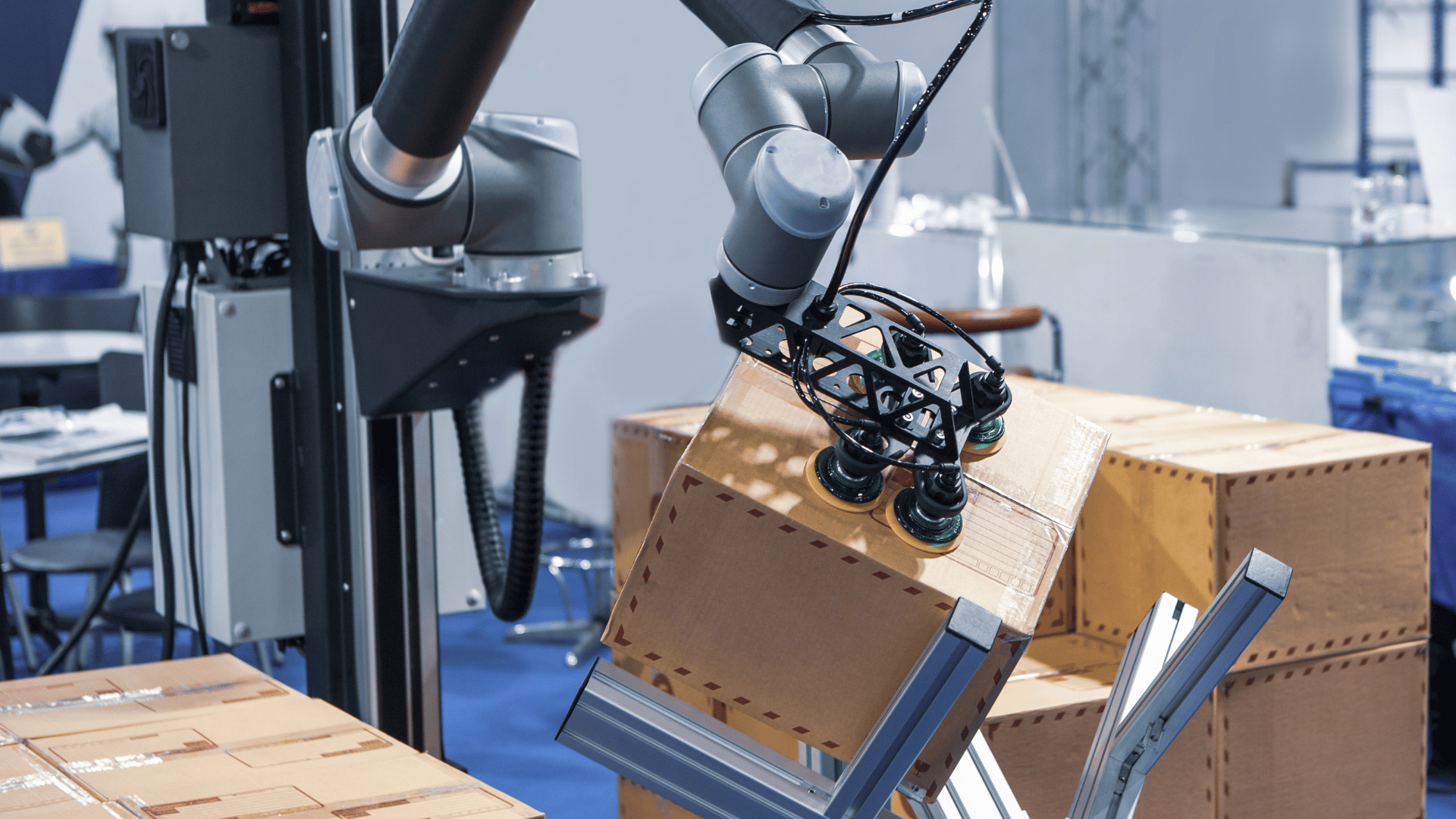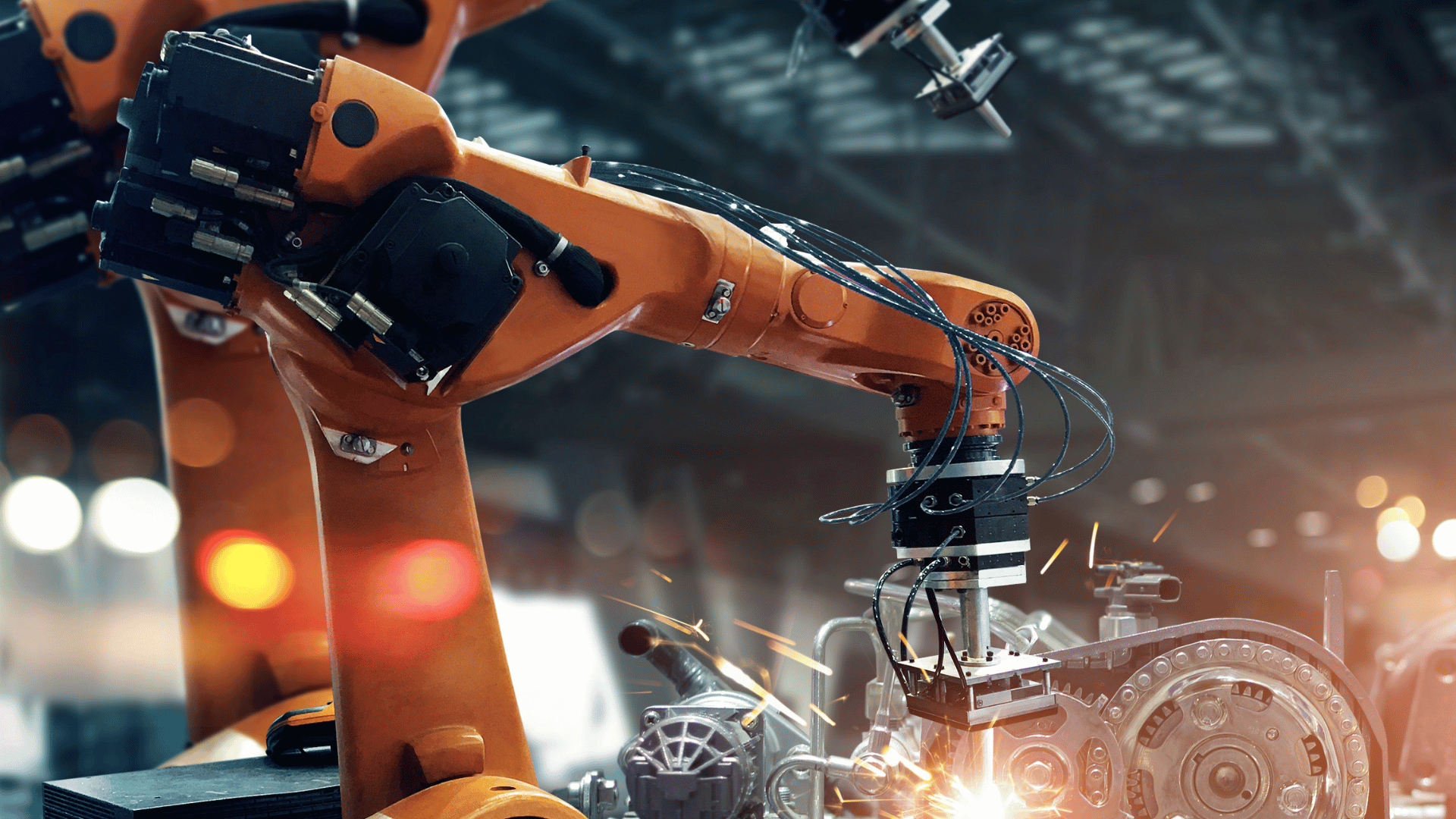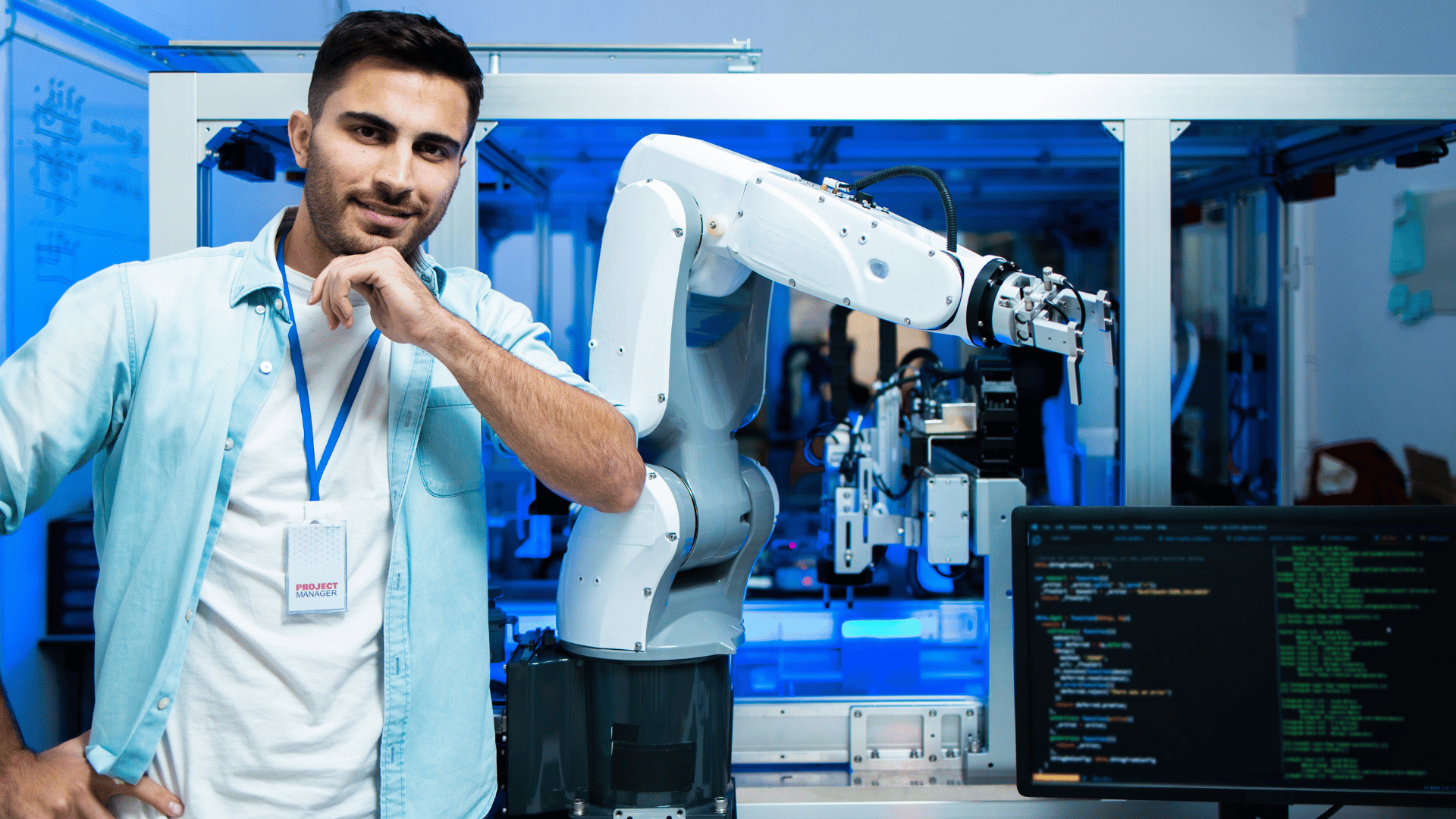How Industrial Automation Saves Your Team from Workplace Injuries (and Protects Your Wallet)
You’ve seen it all. Strained backs, twisted ankles, and near misses with forklifts. Your warehouse and factory floors are a minefield of potential injuries. Every incident costs you time, money, and morale.
It’s about the physical toll on your team. And the ever-rising insurance premiums, the lost productivity, and the constant fear of OSHA knocking on your door.
How can you create a safer, more efficient workplace where your team can thrive?
Let’s introduce you to industrial automation safety as an effective solution to lower workplace injuries and protect your wallet.
This article explores how smart automation, from robots to AMRs, can protect your team and your bottom line. You’ll walk away with a wider understanding of how to transform the slips and falls of manual operations into an A+ in ergonomics in manufacturing and logistics.
Common Warehouse and Factory Injuries. How Automation Prevents Them
Manual labor, especially in fast-paced environments, is a risky business. Regardless of tight safety measures, repetitive strain injuries, back injuries from heavy lifting, and slips and falls are rampant.
What happens when automation steps in?
It brings a new dynamic:
● Reduces repetitive motions and minimizes strain.
● Eliminates the need for manual heavy lifting.
● Creates a more organized and less cluttered workspace that decreases slip hazards.
For context, Amazon tested a multi-robot system called Sequoia at a facility in Houston, TX. Sequoia delivers totes to ergonomic workstations, allowing employees to work within a mid-thigh to mid-chest height range. The change reduced the need for reaching or squatting and lowered the injury rate. Regarding performance, Sequoia improved inventory identification and storage by 75%, reduced the time to list and update inventory, and cut order processing time by 25%, speeding up shipping.
Another example is the adoption of an automated picking system to eliminate the need for workers to repeatedly bend and lift heavy boxes.
Besides back injury prevention, over time, you’ll observe a significant decrease in musculoskeletal injuries and a more comfortable work environment.
Fig. 1. Automated picking system lifting boxes in a warehouse.
How Autonomous Mobile Robots (AMR) and Robotic Arms Eliminate High-Risk Manual Labor
AMRs and robotic arms are the workhorses of modern automation. They take on the dangerous tasks that put your team at risk. Below you will see how they chip in to build a safer and more productive environment for all.
Material Handling and Transport Improvements with AMRs Safety Operations
The CDC’s National Institute for Occupational Safety and Health (NIOSH) highlights that almost half of all compensable low back pain is associated with material manual handling (MMH) tasks. Forklift accidents are also a serious concern. Overturning, pedestrian impacts, and falling loads cause thousands of forklift-related injuries each year.
Integrating AMRs can keep you out of the stats by allowing you to:
● Transport materials, reducing manual heavy lifting.
● Cut forklift traffic, kicking out collision risks.
● Boost material flow, creating a more organized workspace.
An AMR can autonomously transport pallets of goods from the receiving area to storage. The need for manual forklift operation is eliminated.
Reduced risk of material handling injuries and a safer, more efficient warehouse floor are achieved.
Fig. 2. Representation of AMR ready to transport pallets from receiving area to storage area.
Precision Tasks and Assembly with Enhanced by Robotics Safety
Manual assembly tasks demand ultra-high precision. The grand effort leads to repetitive strain and hand injuries.
Robotic arms change the game by helping you:
● Perform tasks with precision and consistent accuracy, 24/7.
● Let go of the risk of hand and arm injuries.
● Accelerate production rate and increase quality.
A robotic arm can perform welding or assembly tasks with pinpoint accuracy. No risks of burns or hand injuries exist. A significant reduction in repetitive strain injuries and improved product quality shine after a short time.
Fig. 3. Robotic arm welding in assembly line.
Financial Benefits of Industrial Automation Safety for the Workplace
Moving past the human cost, injuries also hit your wallet hard.
Let’s break down the financial advantages of investing in safety automation.
Reduced Insurance and Claims Costs
High injury rates lead to increased insurance premiums and costly workers’ compensation claims.
The adoption of AMRs and robotics in manufacturing and warehouse facilities creates:
● Lower insurance premiums due to a safer workplace.
● Reduced workers’ claims and related expenses.
● Improved OSHA compliance, avoiding costly fines.
● Avoidance of fines, penalties, and increased insurance costs from non-compliance issues.
As robots perform the hazardous tasks, handle heavy loads, work in extreme temperatures, or operate in environments with harmful substances, the risk of workplace accidents and injuries reduces. Companies implementing robotic solutions can see up to a 30% reduction in workers’ compensation claims within a year.
Error reduction in inventory management, order picking, and material handling also produce gains. Fewer mistakes, damages, and losses reduce the likelihood of claims related to damaged goods or incorrect shipments. Insurance costs associated with these claims can be significantly lowered. Facilities could see up to 20% increases in order fulfillment rates.
Increased Productivity and Reduced Downtime
Injuries lead to lost productivity and downtime, impacting your bottom line.
Industrial automation crafts a space where you can see:
● Increased productivity due to fewer injuries and less downtime.
● Improved employee morale and reduced absenteeism.
● Enhanced operational efficiency.
AMRs and robotics operate 24/7. No breaks, shifts, or holidays affect.
With continuous operation assured, production lines and warehouses can run smoothly and efficiently, leading to increased productivity and little downtown.
Return On Investment Breakdown
Investing in automation isn’t just about safety. It’s about smart business.
So, let’s crunch some numbers.
ROI Timeline
The ROI timeline for industrial automation varies based on the scale and scope of implementation. Typically:
● Short-Term (1-2 years): Initial cost savings from reduced injuries and insurance premiums.
● Mid-Term (2-5 years): Increased productivity and efficiency gains become evident.
● Long-Term (5+ years): Sustained cost savings and enhanced operational performance.
Uncertainty about the return on investment for automation projects hits most companies. Analyzing the total cost of ownership (TCOW) is fully recommended, as long-term cost savings and improved profitability await.
Still, most manufacturers and warehouse operators see a return on their automation investment within 2-3 years, depending on the scale of implementation.
Investment Budget for Small, Mid, and Large-Sized Facilities
Estimating the investment budget of an automation project shouldn’t scare you.
We say it because scalable automation solutions can fit any budget.
If you’ve already landed on the customized solution that meets your needs, a clear cost breakdown and transparent pricing should follow.
For reference, you can consult this table in the next section.
Table 1. Referential budget for industrial automation implementation in manufacturing and warehouse facilities.
Conclusion
Industrial automation goes beyond placing robots in a facility. It is a path to peace of mind. A step into a future where your team goes home safe every night and your business thrives.
Workplace injuries are a preventable problem. By embracing industrial automation, you invest in your people, your reputation, and your success.
How can you get started?
With a partner who understands your challenges and has the expertise to make change happen.
That’s where Verdusco Automation comes in.
We don’t just sell solutions. We build relationships. We’ll work with you every step of the way, from assessment to installation and beyond.
Verdusco Automation offers you:
● Implementation of ergonomic solutions for material handling with AMRs and robotics.
● Enhancement of safety protocols for compliance based on real-time monitoring and analytics solutions.
● Custom designs tailored for your needs (capacity, budget, and scalability).
Ready to turn your workplace into a safer and more profitable facility with industrial automation?
Let’s build a safer, more profitable future together.
Contact Verdusco Automation today!
📩 Get in touch now: https://www.verduscoautomation.com/contact.






